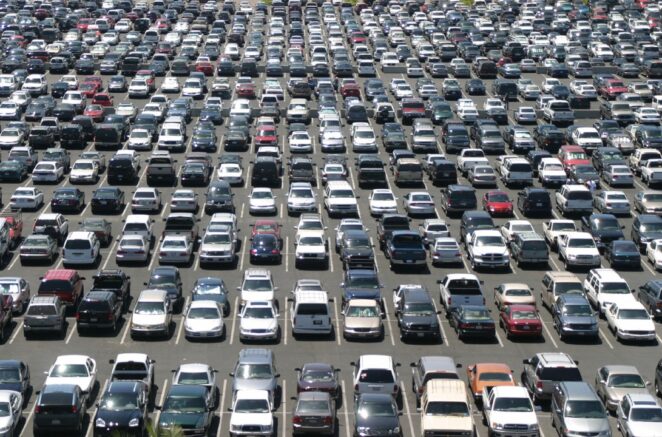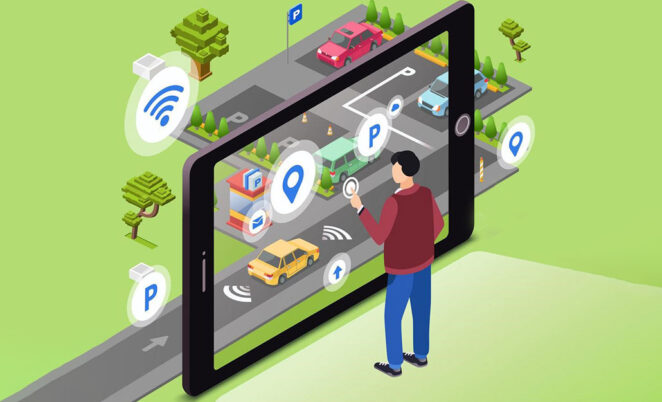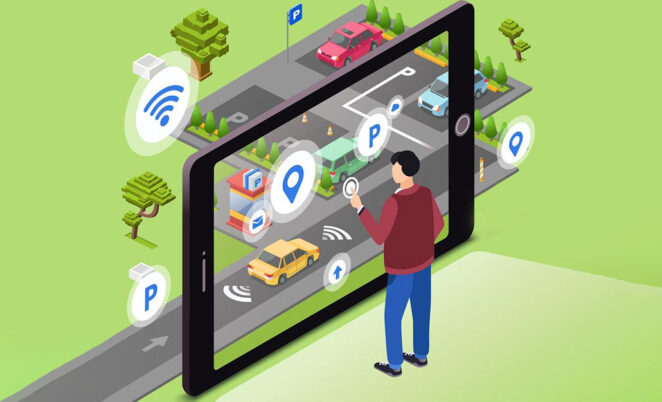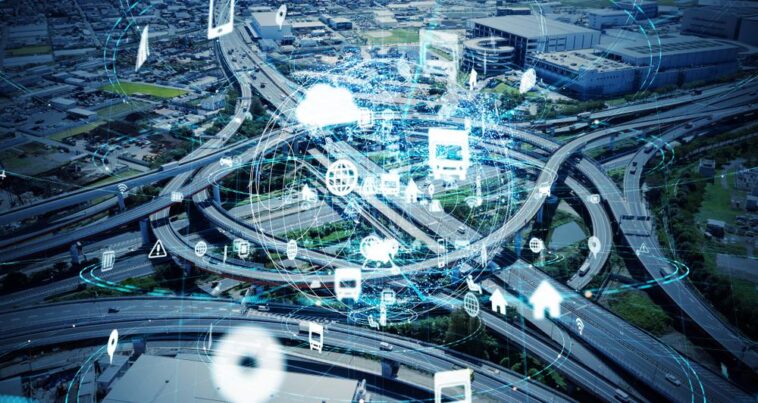Big cities are like anthills where everyone strives to keep up with the frantic pace. People suffer from traffic jams, parking shortages, fuel costs, and exhaust gas. According to Statista, in 2020, 56.2% of the world population were city dwellers. By 2050, their number will increase to 62.5%. Transportation problems are getting worse, and we must find proper measures to make our life more comfortable. Using artificial intelligence in transportation solves this problem.
Problems of the urban transportation system
There are four major problems with the global urban transportation system:
Difficulties in traffic control
The transportation system cannot cope with increasing traffic, and countless traffic jams during peak hours are clear evidence of this. The Texas A&M Transportation Institute found that in 2019, the average driver spent 54 hours waiting in jams. By 2025, the situation will worsen. Traffic congestion will increase to 62 hours, and congestion costs will rise by 20% and amount to $200 billion.
WalletHub estimates that the citizens of Greensboro, North Carolina, spend only 4 hours a year in traffic jams. In comparison, in Atlanta, Georgia, drivers spent 102 hours a year. Although both cities are almost the same in area (347.8 and 353 sq. km.), the population differs by 200,000 people. Congestion is inevitable, but specialists can reduce it with the right traffic management.
Citizens living far from their place of work
Some people have to travel long distances to their workplaces for socio-economic reasons. For low-income employees, renting a house in a city is expensive. Therefore, they choose cheaper dwellings far away from the center. Haven Life researchers found that residents of Palmdale, California, had to commute to work for 85 minutes, which is the longest span. 35% of citizens spend 2 hours a day on daily trips.
According to McKinsey, most city dwellers are dissatisfied with the accessibility of transportation. Commuter fares are expensive, and buses and subways are so crowded that they are inconvenient to use.
Parking shortage

INRIX has found that the average American driver spends 17 hours a year searching for a parking spot. This costs $345 in gas and lost productivity from missed appointments or work. This lack of organization hurts the environment as well, with cars idling and polluting the air as they wait.
Rising fleet costs
The cost of using public transportation is increasing. Fuel prices are rising, and fuel makes up 60% of a bus company’s budget. Maintenance and repairs for buses are also expensive. Users have to consider all costs. However, they are reluctant to pay more if they are facing significant delays due to traffic congestion.
City dwellers are waiting for the administration and artificial intelligence development companies to create an effective public transportation system that will be accessible and convenient.
How to use AI in transportation
AI in transportation solves or eases industry problems. Smart algorithms analyze information gathered by sensors or cameras installed on traffic lights or poles. It studies the data and suggests the best route:
- Intelligent routing.
- Smart parking search.
- Traffic prediction and tracking.
- Improved security.
- Delivery service optimization.
- Electrification of infrastructure.
These measures will help to ease the situation on the roads in the face of rapid urban sprawl and development. Let’s take a closer look at each of the methods.
Intelligent routing
Drivers use navigation apps that update map data every three months or once a year. This information is hard to change, even if one must enter important data related to repairs or temporary closures.
Outdated programs often have limited functionality and are inconvenient to use. People want to work with a clear modern AI-based navigation system to get up-to-date road condition data without being distracted from driving.
AI-based navigation will help plan routes and diminish traffic. Its algorithms collect data from cameras, IoT sensors and other devices. Such a system “sees” what is happening on the roads and advises a driver on the best route to avoid traffic jams. A smart navigator considers traffic jams, accidents, bad weather, holidays, global events, and other factors.
With an AI-based navigation system, a driver does not have to enter the point of departure and destination manually. They pronounce the necessary address, and voice recognition technology processes human speech and builds a route according to the driver’s request. So, the driver does not waste time on manual change and is not distracted from the road.
Smart parking search

You have certainly experienced the following situation: you arrive at work on time, but all the parking lots are busy. As a result, you have to look for an empty parking spot in another residential area, leave your car there and rush for a meeting.
AI in transportation builds a route considering parking spots:
- A user enters their destination into a navigator. They see available parking spots and how many are open. They decide which route to take to park, and how long it will take to get to their destination. The driver plans their journey with this information in mind.
- The smart navigation app provides the optimal route and finds a vacant parking spot upon arrival at the destination. The user reserves it and pays for it in advance so that nobody else can take it.
- The program then builds a path from the parking spot to the building so that the user quickly reaches their destination.
Smart parking search saves time and money on fuel that the driver would use while searching for a free spot.
Traffic prediction and tracking
Smart traffic monitoring gives significant advantages to regulatory bodies and city administration. An organization collects information about the passability of a certain highway section for several days. There are sensors on poles counting how many cars, trucks, buses, and trolleybuses pass at a certain time of the day.
A platform collects information about existing traffic, lane occupancy and vehicle speed. The program runs in the cloud. Therefore, every second intelligent algorithms control traffic on the highway and manage traffic lights to speed up the movement of cars and reduce congestion.
AI in transportation predicts traffic jams before they occur. An app analyzes the actual situation on the road and offers the optimal organization of the urban transportation system. It also makes adjustments to the public transport schedule.
Improved security
People in big cities are constantly rushing for their destinations. Haste, violation of traffic rules, lack of inspection or bad weather lead to accidents. According to the WHO, 1.3 million people die in road traffic accidents each year.
The UN has launched a global AI initiative for road safety. The organization believes that by 2030, AI in transportation will cut the number of accidents by half.
AI monitors drivers’ behavior. A car camera with computer vision functionality determines whether a driver falls asleep and how their hands are positioned. A smart system can wake up a tired driver or alert other road users to a problem.
An AI-powered tracking program collects information about accident locations and identifies the most dangerous sections on the highway. Knowing the statistics, highway traffic and speed limits, regulatory bodies analyze the situation and decide how to improve road conditions to avoid accidents.
Delivery service optimization

We should also give trucks and vans great attention. Logistics companies such as Andersen have concerns if cargo is delayed in transit due to traffic jams or accidents. Couriers need to find the best way to deliver goods on time. But if you need to deliver orders to 20 or more places, it is difficult to think over a rational route considering the carrying capacity of a car, the time preferences of a client and potential changes in the way (delivery cancellation or delay).
AI-powered delivery management and route-planning apps help suppliers meet terms and conditions without delay or errors. The algorithm sets up a route considering all parameters. If conditions change during the delivery process, AI in transportation adjusts the movement, considering the new parameters.
Electrification of the infrastructure
The environmental sustainability of the urban transportation system is an important issue for citizens. By 2035, one in nine cars sold will be electric. Electrification is necessary to reduce the number of harmful emissions into the air.
Hong Kong is one of the leaders in the introduction of electric vehicles. Over 6% of passenger cars have been sold in the region. Other cities are striving to improve pedestrian and bicycle paths and public transport.
Transport and construction organizations will create the road infrastructure considering charging stations. For drivers, this means less fuel and driving through gas stations. Electric vehicles will need electricity to recharge, and utilities will seek to supply this energy.
Conclusion
AI helps make cars safer, cleaner, more reliable and efficient. AI in transportation improves the performance of transport service providers, logistics firms, and city structures. It makes life easier for citizens and makes traveling around the city comfortable and fast.




